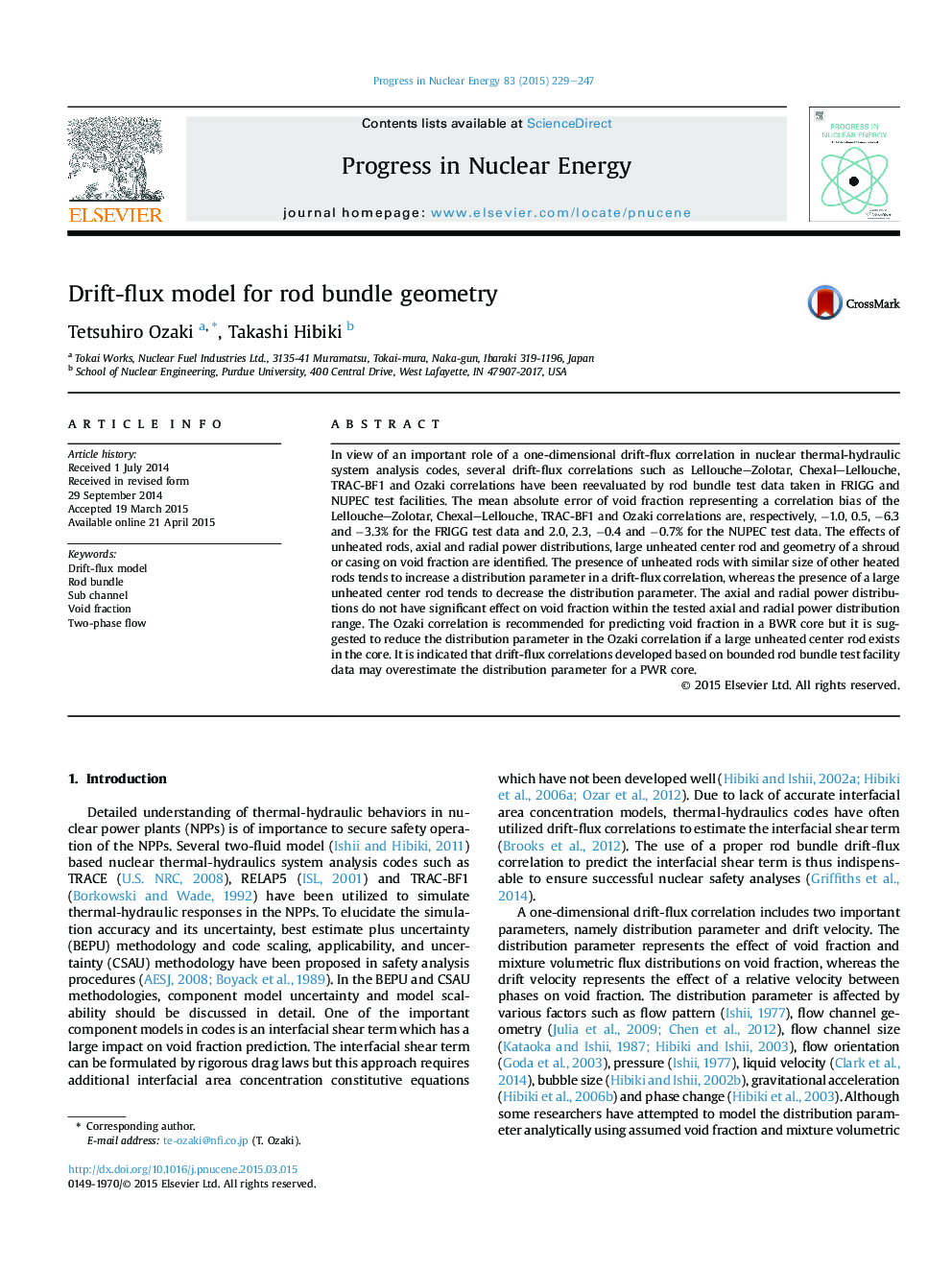| Article ID | Journal | Published Year | Pages | File Type |
|---|---|---|---|---|
| 1740458 | Progress in Nuclear Energy | 2015 | 19 Pages |
•Drift-flux correlations for rod bundles were reevaluated by FRIGG and NUPEC data.•Inconsistency of void fraction data between FRIGG and NUPEC tests are identified.•Effects of unheated rods and power distribution on void fraction are identified.
In view of an important role of a one-dimensional drift-flux correlation in nuclear thermal-hydraulic system analysis codes, several drift-flux correlations such as Lellouche–Zolotar, Chexal–Lellouche, TRAC-BF1 and Ozaki correlations have been reevaluated by rod bundle test data taken in FRIGG and NUPEC test facilities. The mean absolute error of void fraction representing a correlation bias of the Lellouche–Zolotar, Chexal–Lellouche, TRAC-BF1 and Ozaki correlations are, respectively, −1.0, 0.5, −6.3 and −3.3% for the FRIGG test data and 2.0, 2.3, −0.4 and −0.7% for the NUPEC test data. The effects of unheated rods, axial and radial power distributions, large unheated center rod and geometry of a shroud or casing on void fraction are identified. The presence of unheated rods with similar size of other heated rods tends to increase a distribution parameter in a drift-flux correlation, whereas the presence of a large unheated center rod tends to decrease the distribution parameter. The axial and radial power distributions do not have significant effect on void fraction within the tested axial and radial power distribution range. The Ozaki correlation is recommended for predicting void fraction in a BWR core but it is suggested to reduce the distribution parameter in the Ozaki correlation if a large unheated center rod exists in the core. It is indicated that drift-flux correlations developed based on bounded rod bundle test facility data may overestimate the distribution parameter for a PWR core.
